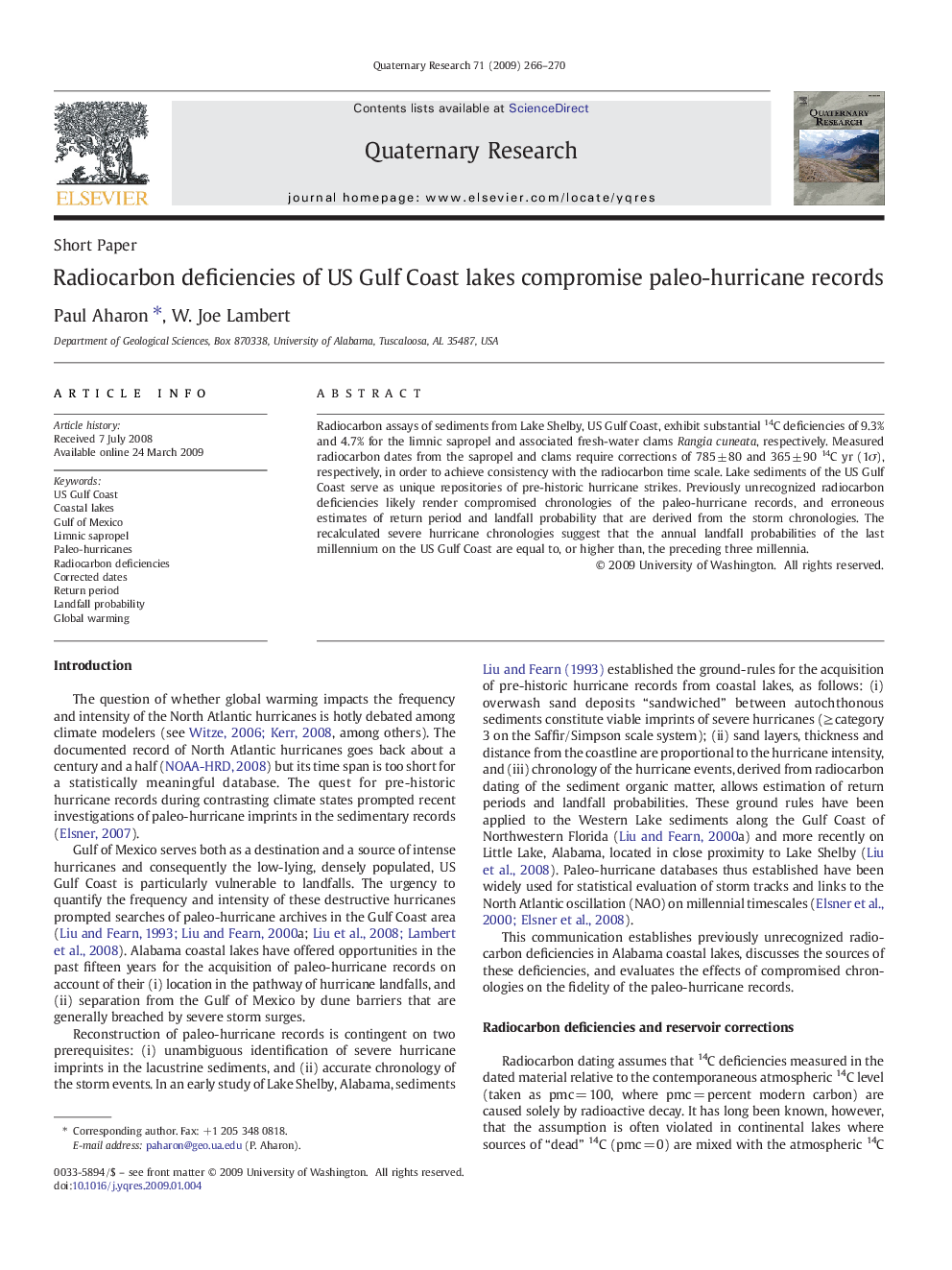| Article ID | Journal | Published Year | Pages | File Type |
|---|---|---|---|---|
| 1045995 | Quaternary Research | 2009 | 5 Pages |
Abstract
Radiocarbon assays of sediments from Lake Shelby, US Gulf Coast, exhibit substantial 14C deficiencies of 9.3% and 4.7% for the limnic sapropel and associated fresh-water clams Rangia cuneata, respectively. Measured radiocarbon dates from the sapropel and clams require corrections of 785 ± 80 and 365 ± 90 14C yr (1Ï), respectively, in order to achieve consistency with the radiocarbon time scale. Lake sediments of the US Gulf Coast serve as unique repositories of pre-historic hurricane strikes. Previously unrecognized radiocarbon deficiencies likely render compromised chronologies of the paleo-hurricane records, and erroneous estimates of return period and landfall probability that are derived from the storm chronologies. The recalculated severe hurricane chronologies suggest that the annual landfall probabilities of the last millennium on the US Gulf Coast are equal to, or higher than, the preceding three millennia.
Related Topics
Physical Sciences and Engineering
Earth and Planetary Sciences
Geology
Authors
Paul Aharon, W. Joe Lambert,
